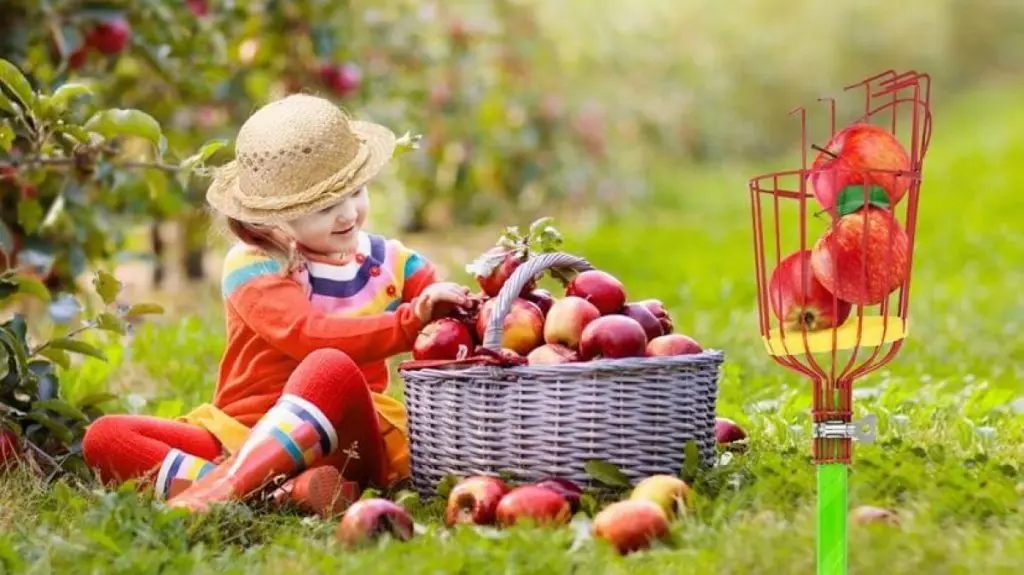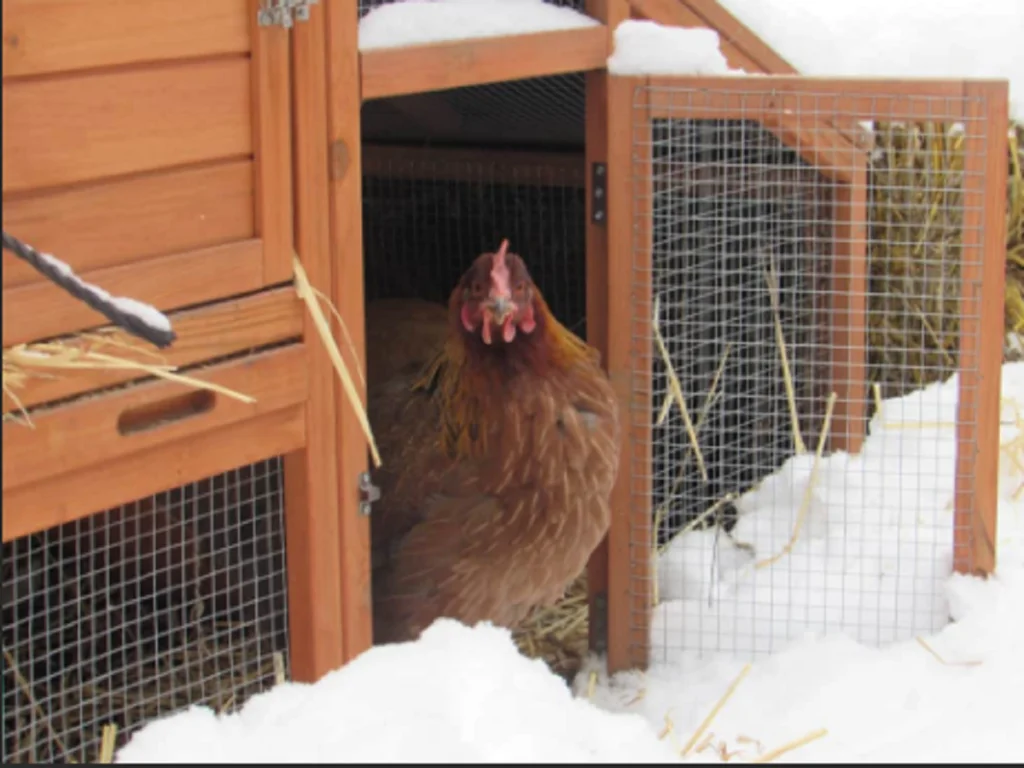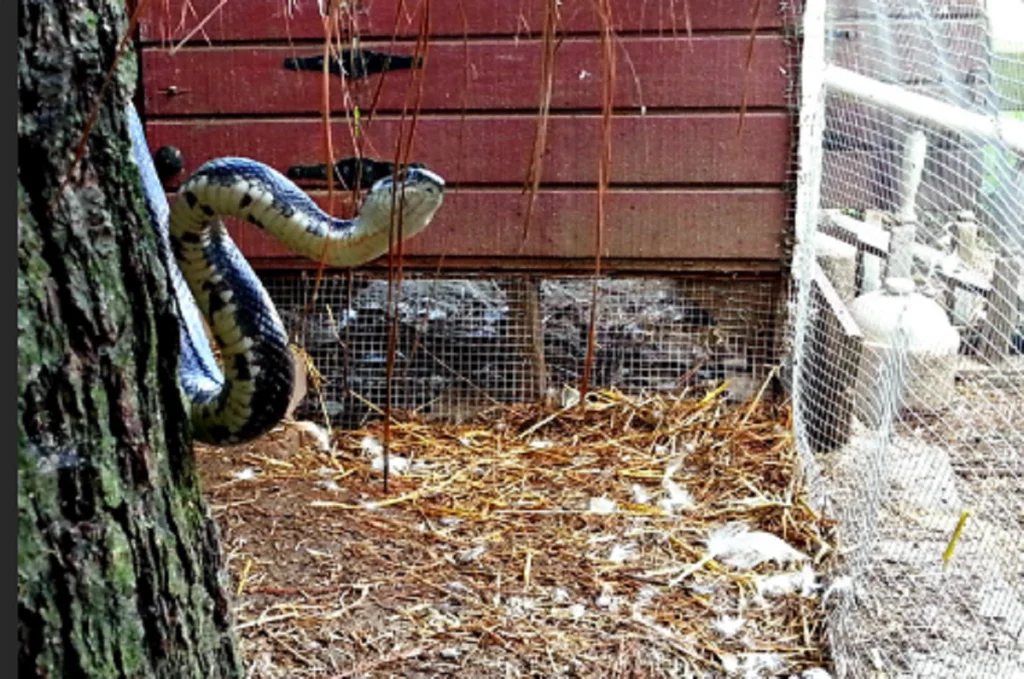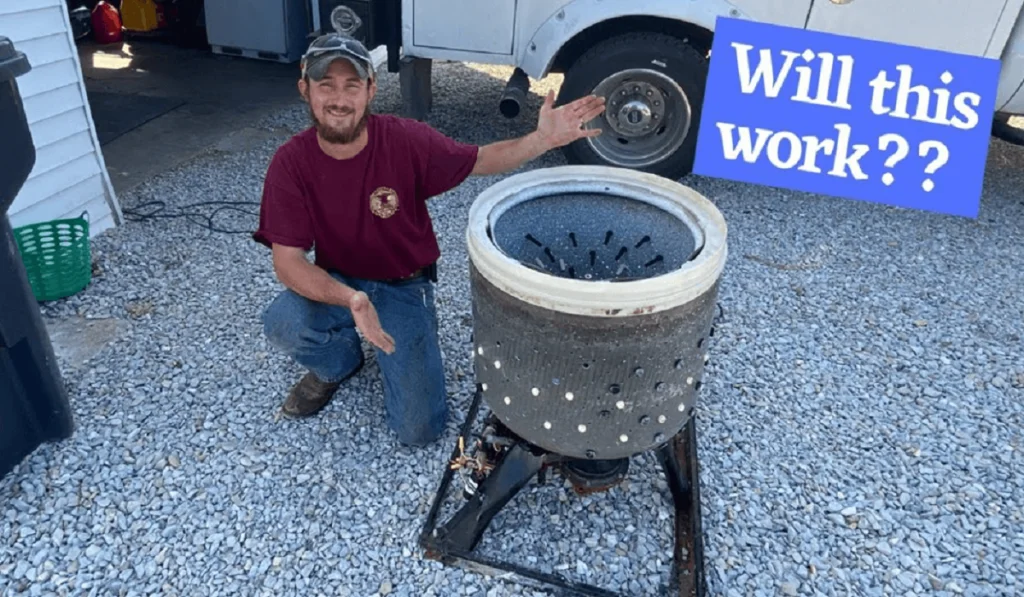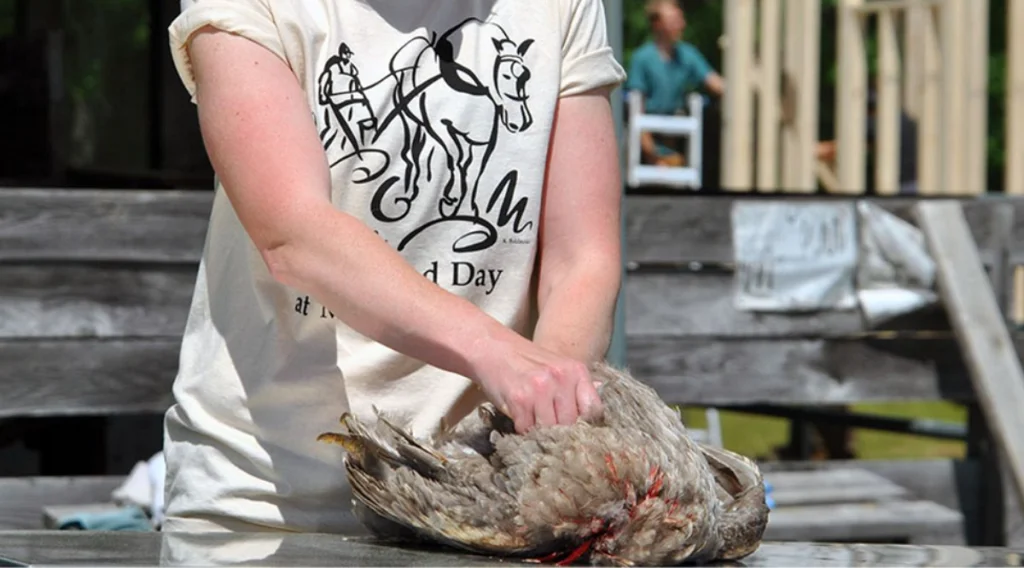Harvesting fruits and vegetables can be a confusing and overwhelming task, as there are so many different tools to choose from and so much information to consider.
You don’t want to damage your fruit or vegetables, which could reduce their quality and make them unsuitable for sale or consumption. Plus, using the wrong tool could mean you don’t get the full benefit of all your hard work.
This article provides you with everything you need to know about harvesting products safely and efficiently.
What is a Fruit & Vegetable Harvester?
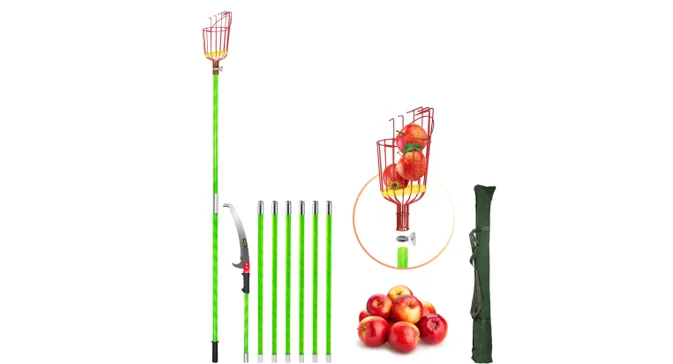
A Fruit & Vegetable Harvester is a machine or device used to pick fruits and vegetables from plants efficiently and efficiently. These machines are typically used in commercial agricultural operations and can be designed to harvest various produce, including apples, oranges, tomatoes, and more. They typically include a mechanical arm or claw to grasp the fruit or vegetable and pluck it from the plant, conveyor belts, or other systems for transporting the product to a storage or packaging area.
Why Do You Need a Tool for Harvesting? A tool for harvesting is necessary for several reasons. Firstly, it allows for efficient and timely harvesting of fruits and vegetables, which is crucial for maintaining the freshness and quality of the produce. This is especially important for commercial agricultural operations, where large quantities of produce need to be harvested quickly.
Additionally, a harvesting tool can help reduce labor costs and physical strain on workers, eliminating the need for manual labor in the harvesting process. Furthermore, using a harvesting tool can also help to prevent damage to the plants and fruits, as it allows for a more delicate and precise method of picking. Overall, using a tool for harvesting can increase the yield and the quality of the product, improve the working conditions and reduce the labor cost.
The Best Gardening Tool for Handheld Fruit Picking
1. VEVOR 26 FT Pole Saw with Head Bracket
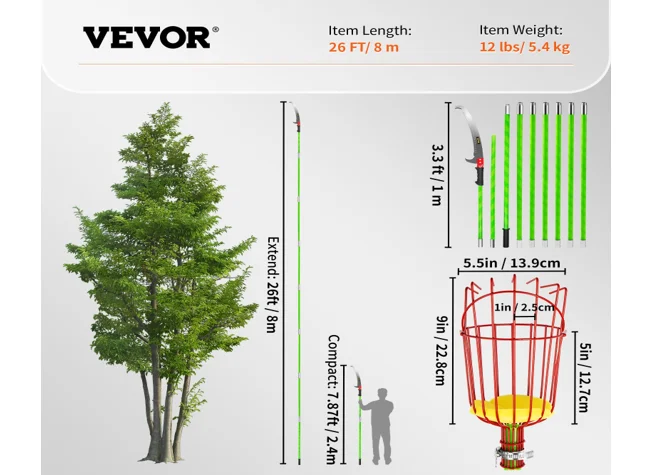
This portable fruit picker is made to quickly and effectively collect fruit from tall trees. This apple picker pole has a 26-foot extension and a long, lightweight aluminum pole, you can reach fruit that would otherwise be out of your reach. As you pick the fruit, it is held firmly in the basket at the end of the pole, which is intended specifically to keep the fruit from falling to the ground. The VEVOR 26 FT Pole Saw with Head Bracket is ideal for trimming trees and gathering apples, oranges, and lemons.
Specifications:
● Model: VV-CZQ-26FT
● Pole Material: Aluminum Alloy
● Pole Dia.: 1.26″/3 cm
● Bracket Material: Stainless Steel
● Handle Material: Rubber
● Bracket Size(Dia. x D): 5.6 x 6″/ 14 x 15 cm
● Adjustable Length: 7.87-26 ft/ 2.4 m-8 m
● Item Weight: 12 lbs/5.4 kg
2. INFLATION Fruit Picker
This handheld fruit picker is designed to make picking fruit easy and efficient. The aluminum handle is lightweight and easy to hold, while the basket at the end of the handle is designed to hold the fruit as you pick it up securely. The INFLATION Fruit Picker is perfect for picking oranges, lemons, and other small to medium-sized fruits.
Specifications:
● Pole Material: Aluminum Alloy
● Adjustable Length: 13ft
● Item Weight: 4.4 lbs
3. DonSail Fruit Picker Pole Tool with Basket
With this portable fruit picker, You can reach fruit that would otherwise be out of reach thanks to the long handle’s 65-inch extension. As you pick the fruit, the basket at the handle’s end is specifically made to hold it firmly and keep it from dropping to the ground. Apples, oranges, lemons, and other fruits are excellent for selecting with the DonSail Fruit Picker.
Specifications:
● Material of Poles: Premium Steel
● Material of Head Basket: Premium Steel
● Material of Handle Top: Plastic
● Pole Diameter: 1″
● Optional Sizes: 35-65″, 35-95″, 35-120
4. Walensee Fruit Picker
Fruit picking is made simple and effective with the help of this handheld tool. The fruit will be safely held in the basket at the end of the stainless steel handle, which is lightweight and comfortable to grasp. Oranges, lemons, and other tiny to medium-sized fruits can all be picked using the Walensee Fruit Picker.
Specifications:
● Pole Material: Stainless steel
● Adjustable Length: 8ft, 5.5t, 13ft
● Item Weight: 2.2 lbs
● Basket dimension: 5.5 inches
5. Zenport ZL6146D Long Reach Fruit Harvester
This portable fruit picker is ideal for quickly harvesting fruit. With its long handle, which can be extended up to 28 inches, you can grab the fruit that would otherwise be out of your reach. When you pluck the fruit, the basket acts as a claw, holding it firmly to stop it from dropping to the ground.
Specifications:
● Pole Material: Aluminum Alloy
● Adjustable Length:28 inches
● Item Weight: 1.2 lbs
● Claw dimension: It can grab objects between 2.4 to 5.2-inches
What are the Different Types of Fruit and Vegetable Harvesters?
There are several different types of fruit and vegetable harvesters available on the market, each with its unique features and advantages. Some of the most common types include:
Mechanical Harvesters
These large machines use a combination of mechanical arms and claws to pick fruits and vegetables. They are typically used for large-scale commercial operations and are designed to harvest a wide variety of produce.
Handheld Harvesters
These are manual tools used to pick fruits and vegetables by hand. They are typically used for small-scale operations or for harvesting fruits and vegetables that are difficult to reach.
Shaker Harvesters
These machines use vibration to shake fruits and vegetables off the plant. They are typically used for hard-to-reach fruits and vegetables such as olives, almonds, and walnuts.
Conveyor belt Harvesters
These machines use a conveyor belt to transport fruits and vegetables from the field to a collection point. They are typically used for large-scale commercial operations and are designed to harvest a wide variety of produce.
Self-propelled Harvesters
These machines are mounted on a wheeled chassis and can move around the field independently. They are typically used for large-scale commercial operations and are designed to harvest a wide variety of produce.
Picking aids
These simple tools are used to help pickers reach fruits and vegetables that are difficult to reach, such as fruit ladders, picking sticks, and picking bags.
How to Choose Which Tool is Best for You?
When choosing a tool for harvesting fruits, there are several things to consider before purchasing. One important factors is the type of fruit to be harvested. Different tools are designed for different types of fruits, so it is essential to choose a tool that is specifically designed for the type of fruit you will be harvesting.
Another essential factor to consider is the size and scale of your operation. If you are running a large commercial operation, you will likely need a tool that can handle high volumes of fruit and is built to withstand heavy use. On the other hand, if you are running a small-scale operation, you can get by with a more basic tool.
You also need to look at the efficiency and speed of the tool, as it will determine the amount of effort and time you will spend harvesting. Additionally, you should consider the cost of the tool and the cost of maintenance, repair, and replacement parts.
Are Tools Worth the Hassle or Just Another Way to Waste Time & Money?

Tools for harvesting can be a worthwhile investment for many farmers and growers. They can greatly increase the harvest’s efficiency and speed, leading to higher yields and better-quality produce. They also help reduce labor costs and physical strain on workers, eliminating the need for manual labor in harvesting. Additionally, using a harvesting tool can help to prevent damage to the plants and fruits, as it allows for a more delicate and precise method of picking.
However, it’s worth noting that they can be expensive, and it may not be a good investment for everyone. It depends on the scale of the operation, the type of fruits you want to harvest, and the available budget.
FAQs
How to properly maintain your gardening tools?
Proper care of gardening tools is essential to ensure they last long and continue working effectively. Here are some suggestions on how to properly care for your gardening tools:
● Clean your tools after each use: This will remove dirt, debris, and any leftover plant material that can cause rust or corrosion. Use a brush or scraper to remove dirt or debris, then wipe the tools with a clean cloth.
● Dry your tools: Be sure to dry your tools thoroughly after cleaning them to prevent rust and corrosion. This is especially important for tools used in wet conditions.
● Oil or lubricate moving parts: This will keep your tools in good working condition by preventing rust and corrosion and making the tools work smoothly.
● Store your tools in a dry place: Keep your tools in a dry place when not in use, such as a shed or garage. Avoid storing them outside where they can be exposed to the elements.
● Sharpen your tools: Regularly sharpen them to keep them in good working condition. This will make them more effective and efficient in the long run.
● Inspect your tools regularly: Check your tools for any noticeable signs of wear or damage, such as bent handles or cracked blades. Replace or repair damaged tools as soon as possible to prevent further damage.
By following these tips, you can maintain your tools in good condition and prolong their lifespan. This will save you money and time in the long run.
Does Gardening Tools Rust?
Yes, the majority of gardening tools can rust.
How Many Tools Do I Need to Start My Garden?
The specific tools you will need to start your garden will depend on the type of gardening you plan to do, the size of your garden, and the types of plants you plan to grow. However, there are some essential tools that most gardeners will need to get started:
● Garden fork: This is used for turning and loosening soil and removing weeds.
● Spade: This is used for digging, planting, and moving soil.
● Hoe: This is used for cultivating soil and removing weeds.
● Pruner: This is used for pruning and trimming plants.
● Hand trowel: This is used for planting, transplanting, and cultivating small areas.
● Rake: This is used for leveling soil, removing debris, and preparing seedbeds.
● Watering can: This is used for watering plants.
● Garden gloves protect your hands from thorns, dirt, and other hazards.
These are the essential tools needed for gardening. You might need additional tools depending on the specific needs of your garden and plants. Some examples are Lopping shears, Hedge shears, Lawn mowers, wheelbarrows, Garden hoses, etc.

